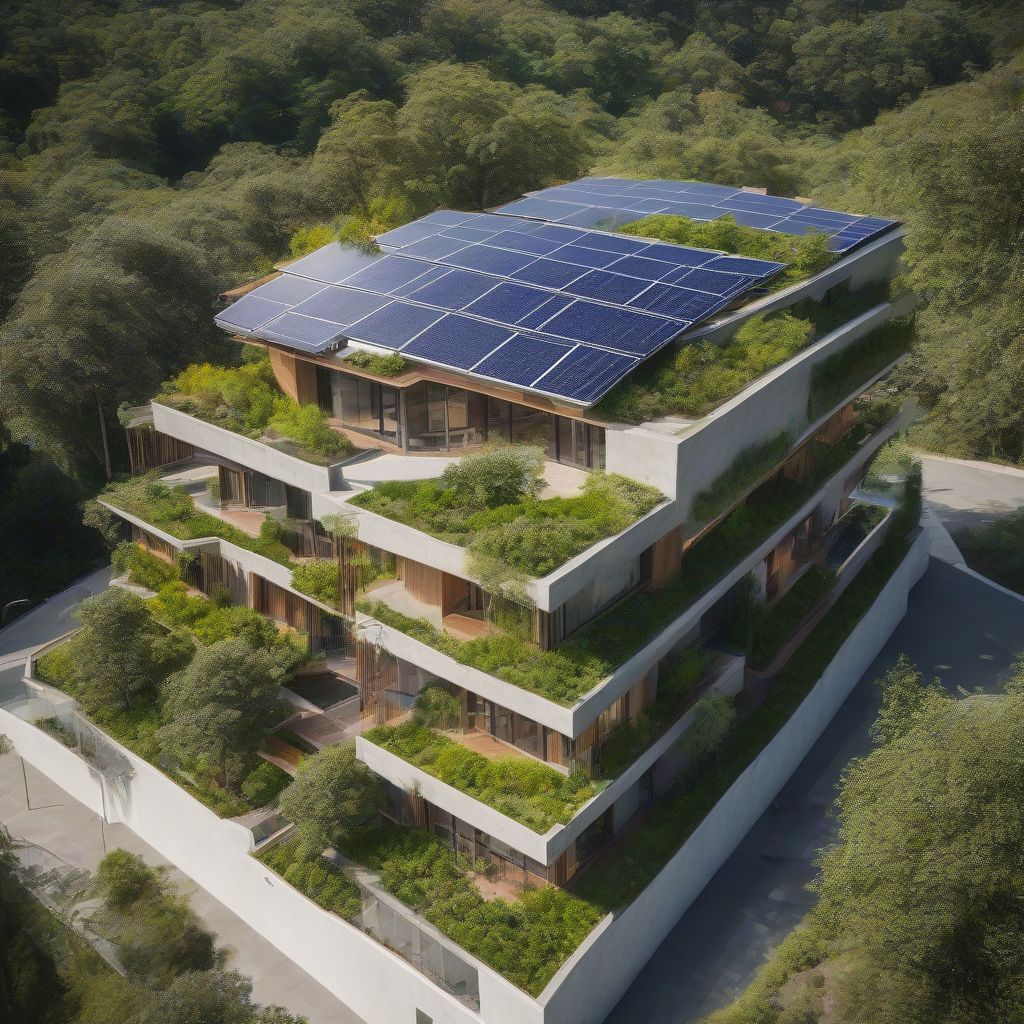Imagine a world where buildings exist in harmony with nature, consuming less energy, generating fewer emissions, and promoting a healthier environment for occupants. That’s the promise of green building, and it’s more achievable than you might think. Whether you’re planning a new home, a commercial space, or even a renovation, integrating green building principles can lead to long-term benefits for you, your wallet, and the planet. This comprehensive guide will walk you through the steps of creating a green building plan, empowering you to turn your vision of a sustainable future into a reality.
Understanding Green Building: A Foundation for Success
Before diving into the specifics of your plan, it’s important to grasp the core concepts of green building. Also known as sustainable building, this approach emphasizes:
- Energy Efficiency: Minimizing energy consumption through design, materials, and technology, leading to reduced utility bills and a smaller carbon footprint.
- Water Conservation: Implementing strategies to reduce water usage, such as low-flow fixtures and rainwater harvesting systems.
- Resource Efficiency: Utilizing materials with recycled content, sourced locally to minimize transportation impacts, and choosing durable options to reduce the need for replacements.
- Indoor Environmental Quality: Prioritizing the health and well-being of occupants by ensuring proper ventilation, using low-VOC (volatile organic compound) materials, and maximizing natural light.
Crafting Your Green Building Plan: A Step-by-Step Approach
1. Define Your Vision and Goals:
- What are your sustainability aspirations for this project?
- Are you aiming for specific green building certifications (LEED, BREEAM, etc.)?
- What are the most important environmental factors for your location (water scarcity, energy sources, climate)?
Setting clear objectives from the outset will guide your decision-making process throughout the project.
2. Assemble Your Green Dream Team:
- Architect: Look for professionals with experience in sustainable design principles and a passion for eco-friendly solutions.
- Green Building Consultant: These experts can provide invaluable guidance on green building certifications, energy modeling, and material selection.
- Contractor: Choose a builder with a proven track record in green building practices and a commitment to sustainable construction techniques.
3. Site Analysis: Working with Nature’s Blueprint
- Orientation and Solar Gain: Analyze the site’s solar exposure to optimize building orientation for passive heating and cooling.
- Natural Ventilation Potential: Assess prevailing wind patterns and surrounding vegetation to leverage natural ventilation strategies.
- Water Resources: Identify opportunities for rainwater harvesting, greywater reuse, and drought-tolerant landscaping.
4. Energy-Efficient Design Strategies: Powering Down Your Impact
- Building Envelope: Design a well-insulated and airtight building envelope to minimize energy loss through walls, roofs, and windows.
- Passive Solar Design: Utilize south-facing windows (in the Northern Hemisphere) to maximize solar heat gain during the winter months.
- Energy-Efficient Appliances and Lighting: Specify ENERGY STAR certified appliances and LED lighting to significantly reduce energy consumption.
- Renewable Energy Sources: Explore the feasibility of integrating solar panels, wind turbines, or geothermal heat pumps to generate renewable energy on-site.
5. Water Conservation Measures: Every Drop Counts
- Low-Flow Fixtures: Install low-flow toilets, showerheads, and faucets to significantly reduce water usage without sacrificing performance.
- Water-Efficient Appliances: Choose dishwashers and washing machines with high Water Factor (WF) ratings, indicating water efficiency.
- Rainwater Harvesting: Collect rainwater from roofs and paved surfaces for irrigation, toilet flushing, and other non-potable water needs.
 Green Building Design
Green Building Design
6. Sustainable Material Selection: Building with a Conscience
- Recycled Content: Prioritize materials with high recycled content, such as recycled glass countertops or reclaimed wood flooring.
- Locally Sourced Materials: Choose materials that are extracted, manufactured, and sourced locally to reduce transportation emissions and support the regional economy.
- Durable and Low-Maintenance Materials: Select materials that are long-lasting and require minimal maintenance to reduce the need for replacements and associated environmental impacts.
7. Indoor Environmental Quality: Creating a Healthy Haven
- Ventilation: Design for adequate ventilation to improve indoor air quality, reduce humidity, and prevent mold growth.
- Low-VOC Materials: Choose paints, adhesives, sealants, and flooring materials with low or no VOCs to minimize the emission of harmful chemicals into the indoor environment.
- Daylighting: Maximize natural light by incorporating large windows, skylights, and light shelves to reduce the need for artificial lighting and improve occupant well-being.
8. Construction Waste Management: Minimizing Your Footprint
- Construction Waste Audit: Conduct an audit to identify materials that can be recycled, reused, or salvaged.
- Deconstruction: Consider deconstruction over demolition to carefully dismantle and salvage building components for reuse.
- Choose Contractors Committed to Recycling: Partner with contractors who prioritize waste diversion and have established relationships with recycling facilities.
9. Monitoring and Continuous Improvement: A Journey, Not a Destination
- Building Performance Monitoring: Implement systems to track energy and water consumption, allowing for adjustments and optimization over time.
- Occupant Education: Educate building occupants on green building features and encourage sustainable practices.
- Ongoing Commissioning: Regularly assess building systems to ensure they are operating efficiently and address any performance issues.
Reaping the Rewards: The Benefits of Going Green
Embracing green building principles offers a multitude of benefits:
- Reduced Environmental Impact: Lower your carbon footprint, conserve water, and minimize waste generation.
- Cost Savings: Experience significant reductions in energy and water bills over the lifespan of your building.
- Increased Property Value: Green buildings are in high demand, potentially increasing the market value of your property.
- Improved Health and Well-being: Create a healthier indoor environment for occupants, leading to increased productivity, comfort, and overall well-being.
Conclusion: Building a Sustainable Future, One Brick at a Time
Creating a green building plan is an investment in a healthier, more sustainable future. By incorporating the steps outlined in this guide, you can embark on a rewarding journey of creating a structure that not only meets your needs but also minimizes its impact on the environment. Remember, every decision you make, from site selection to material choices, presents an opportunity to embrace sustainability and build a brighter future for generations to come.
Are you ready to turn your green building dreams into a reality? Share your thoughts, questions, and experiences in the comments below!
[amazon bestseller=”green building”]
